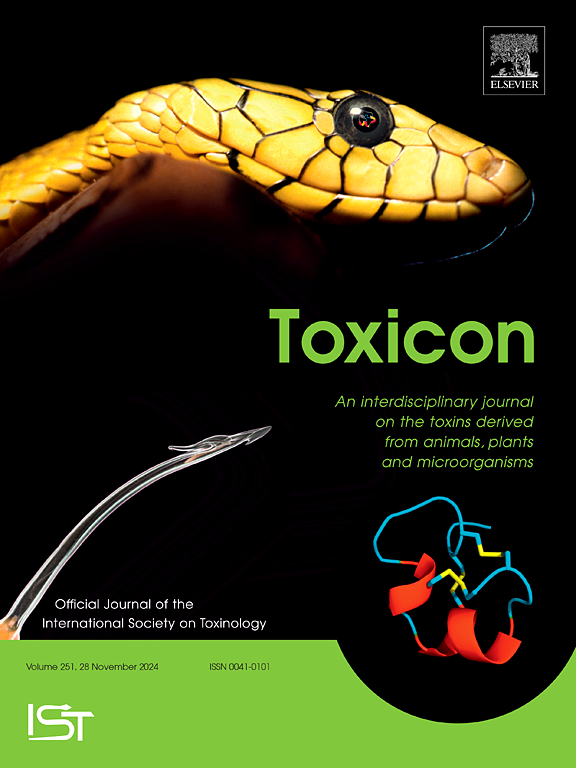Advancements in diagnostic techniques for scorpion venom identification: A comprehensive review
IF 2.6
4区 医学
Q2 PHARMACOLOGY & PHARMACY
引用次数: 0
Abstract
Scorpion envenomation's ignored public health problem in tropical and subtropical countries is alarming. Particularly dangerous for small children and the elderly, it can cause severe problems and even death. Recent studies have proposed the creation of rapid, easy, species-specific, and sensitive detection kits as an alternative to the methods currently used to identify scorpions. Unfortunately, there is currently no commercially available technology for detecting scorpion envenomation in clinical settings, especially in remote tropical health centres. This study delineates the most dangerous scorpion species globally and the advancements in identifying their stings in vitro or in envenomed plasma. Furthermore, we have highlighted the practical challenges associated with scorpion venom detection and the necessity for innovative, expedited, and more accessible detection kits in countries where scorpion envenomation poses a significant issue.

蝎子毒液鉴定诊断技术研究进展综述
蝎子中毒在热带和亚热带国家被忽视的公共卫生问题令人担忧。对小孩和老人来说尤其危险,它会导致严重的问题甚至死亡。最近的研究已经提出创建快速,简单,物种特异性和敏感的检测试剂盒,作为目前用于鉴定蝎子的方法的替代方法。不幸的是,目前在临床环境中,特别是在偏远的热带卫生中心,没有商业上可用的检测蝎子中毒的技术。本研究描述了全球最危险的蝎子物种,以及在体外或有毒血浆中识别其蜇伤的进展。此外,我们强调了与蝎子毒液检测相关的实际挑战,以及在蝎子毒素构成重大问题的国家中创新、快速和更容易获得的检测试剂盒的必要性。
本文章由计算机程序翻译,如有差异,请以英文原文为准。
求助全文
约1分钟内获得全文
求助全文
来源期刊

Toxicon
医学-毒理学
CiteScore
4.80
自引率
10.70%
发文量
358
审稿时长
68 days
期刊介绍:
Toxicon has an open access mirror Toxicon: X, sharing the same aims and scope, editorial team, submission system and rigorous peer review. An introductory offer Toxicon: X - full waiver of the Open Access fee.
Toxicon''s "aims and scope" are to publish:
-articles containing the results of original research on problems related to toxins derived from animals, plants and microorganisms
-papers on novel findings related to the chemical, pharmacological, toxicological, and immunological properties of natural toxins
-molecular biological studies of toxins and other genes from poisonous and venomous organisms that advance understanding of the role or function of toxins
-clinical observations on poisoning and envenoming where a new therapeutic principle has been proposed or a decidedly superior clinical result has been obtained.
-material on the use of toxins as tools in studying biological processes and material on subjects related to venom and antivenom problems.
-articles on the translational application of toxins, for example as drugs and insecticides
-epidemiological studies on envenoming or poisoning, so long as they highlight a previously unrecognised medical problem or provide insight into the prevention or medical treatment of envenoming or poisoning. Retrospective surveys of hospital records, especially those lacking species identification, will not be considered for publication. Properly designed prospective community-based surveys are strongly encouraged.
-articles describing well-known activities of venoms, such as antibacterial, anticancer, and analgesic activities of arachnid venoms, without any attempt to define the mechanism of action or purify the active component, will not be considered for publication in Toxicon.
-review articles on problems related to toxinology.
To encourage the exchange of ideas, sections of the journal may be devoted to Short Communications, Letters to the Editor and activities of the affiliated societies.
 求助内容:
求助内容: 应助结果提醒方式:
应助结果提醒方式:


